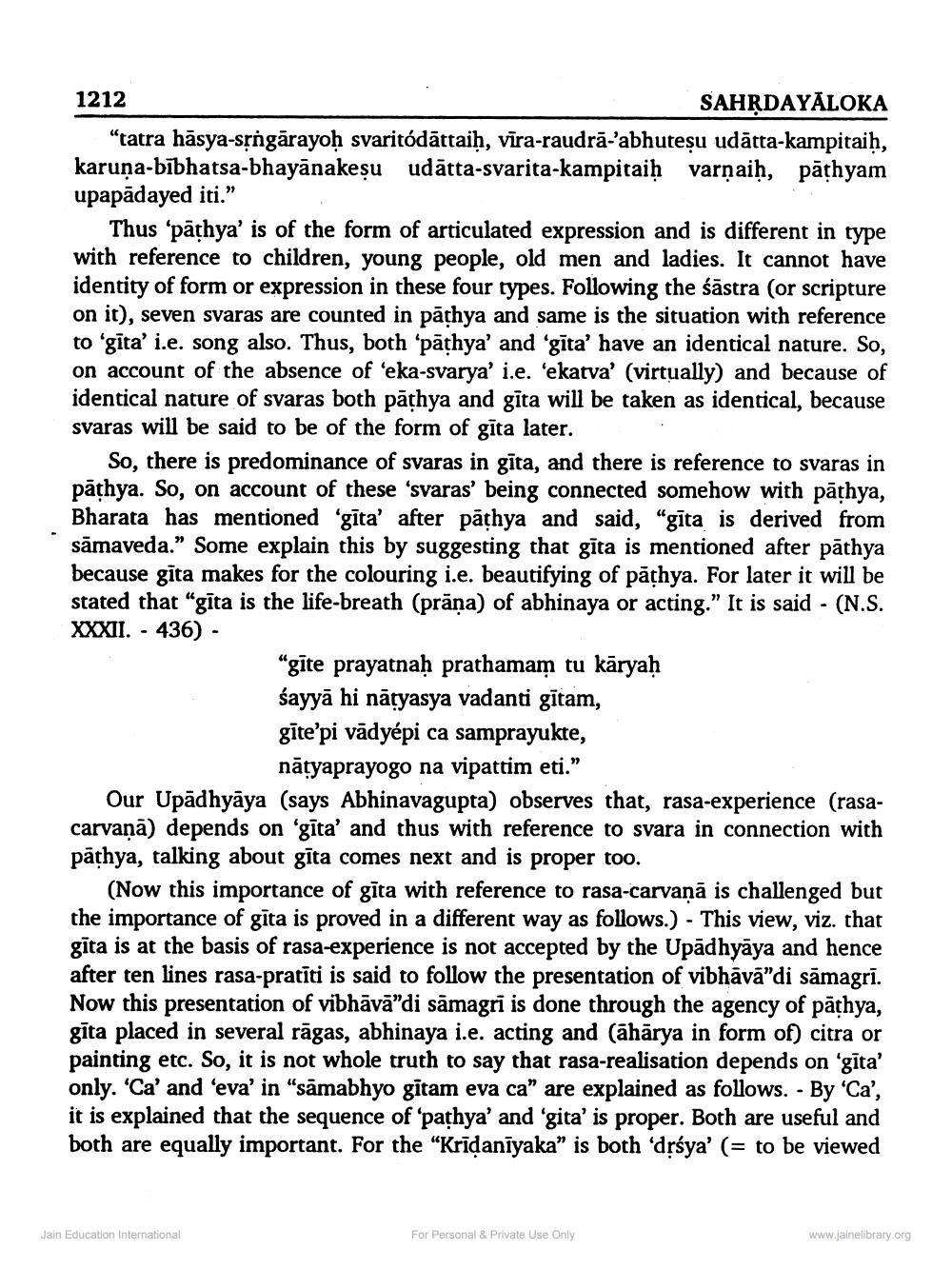________________
1212
SAHĶDAYĀLOKA "tatra hāsya-srngārayoh svaritódāttaih, vīra-raudrā-'abhutesu udātta-kampitain, karuņa-bībhatsa-bhayānakeșu udātta-svarita-kampitaiḥ varņaiḥ, pāthyam upapādayed iti.”
Thus 'pathya' is of the form of articulated expression and is different in type with reference to children, young people, old men and ladies. It cannot have identity of form or expression in these four types. Following the śāstra (or scripture on it), seven svaras are counted in pāthya and same is the situation with reference to 'gita' i.e. song also. Thus, both 'pāthya' and 'gīta' have an identical nature. So, on account of the absence of 'eka-svarya' i.e. 'ekatva' (virtually) and because of identical nature of svaras both păthya and gita will be taken as identical, because svaras will be said to be of the form of gita later.
So, there is predominance of svaras in gīta, and there is reference to svaras in pāthya. So, on account of these 'svaras' being connected somehow with pathya, Bharata has mentioned 'gīta' after pāthya and said, “gīta is derived from sāmaveda.” Some explain this by suggesting that gita is mentioned after pāthya because gita makes for the colouring i.e. beautifying of pāthya. For later it will be stated that "gīta is the life-breath (prāņa) of abhinaya or acting." It is said - (N.S. XXXII. - 436) -
"gīte prayatnaḥ prathamam tu kāryaḥ śayyā hi nātyasya vadanti gitam, gīte’pi vādyépi ca samprayukte,
nātyaprayogo na vipattim eti.” Our Upādhyāya (says Abhinavagupta) observes that, rasa-experience (rasacarvanā) depends on 'gita' and thus with reference to svara in connection with pāthya, talking about gīta comes next and is proper too.
(Now this importance of gita with reference to rasa-carvanā is challenged but the importance of gīta is proved in a different way as follows.) - This view, viz. that gīta is at the basis of rasa-experience is not accepted by the Upādhyāya and hence after ten lines rasa-pratiti is said to follow the presentation of vibhāvā”di sāmagri. Now this presentation of vibhāvā"di sāmagri is done through the agency of pāthya, gīta placed in several rāgas, abhinaya i.e. acting and (āhārya in form of) citra or painting etc. So, it is not whole truth to say that rasa-realisation depends on 'gita' only. 'Ca' and 'eva' in "sāmabhyo gitam eva ca" are explained as follows. - By 'Ca', it is explained that the sequence of 'pathya' and 'gita' is proper. Both are useful and both are equally important. For the “Krīdanīyaka” is both drśya' (= to be viewed
Jain Education International
For Personal & Private Use Only
www.jainelibrary.org




